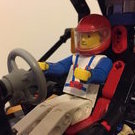Sign in to follow this
Followers
0

[WIP] Mid-scale PU off-road chassis variants
By
gyenesvi, in LEGO Technic, Mindstorms, Model Team and Scale Modeling
-
Recently Browsing 0 members
No registered users viewing this page.
